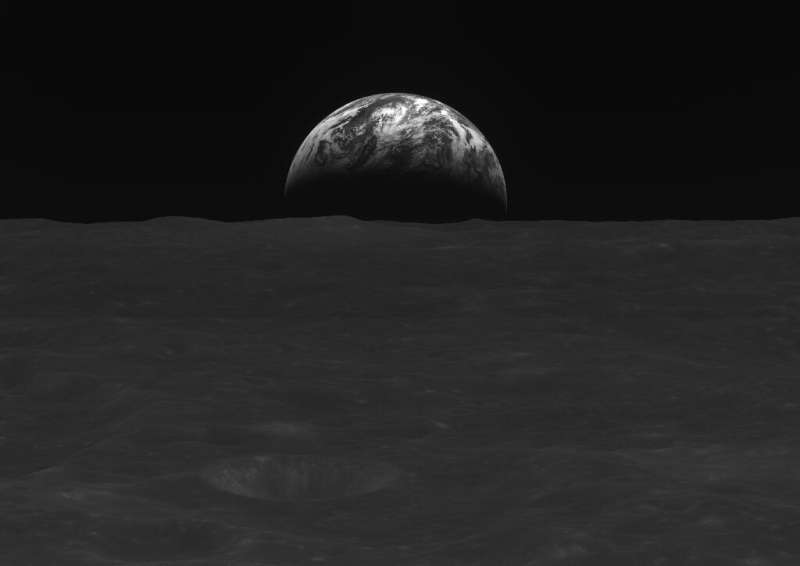 South Korea’s first-ever lunar orbiter Danuri has sent black-and-white images of Earth and the lunar surface, including this photo taken on December 31, 2022.
South Korea’s first-ever lunar orbiter Danuri has sent black-and-white images of Earth and the lunar surface, including this photo taken on December 31, 2022.
South Korea’s first-ever lunar orbiter Danuri has sent black-and-white photos of the Moon’s surface and Earth, the national space center said Tuesday.
Danuri—a portmanteau of the Korean words for “Moon” and “enjoy”—was launched on a SpaceX rocket from the United States in August 2022 and entered lunar orbit last month.
Its images—taken between December 24 and January 1—show the lunar surface and Earth, and were shot from less than 120 kilometers (75 miles) over the Moon, the Korea Aerospace Research Institute (KARI) said in a statement.
The images and videos will be “used to select potential sites for a Moon landing in 2032,” it added.
Danuri is circling the Moon every two hours, the center said.
The orbiter will begin its scientific mission next month, which includes mapping and analyzing lunar terrain, and measuring magnetic strength and gamma rays.
It will also test experimental “space internet” technology by transmitting photos and videos to Earth.
President Yoon Suk-yeol has hailed Danuri’s achievements as a “historical moment” in the country’s space program.
South Korea has laid out ambitious plans for outer space, including landing spacecraft on the Moon by 2032 and Mars by 2045.





